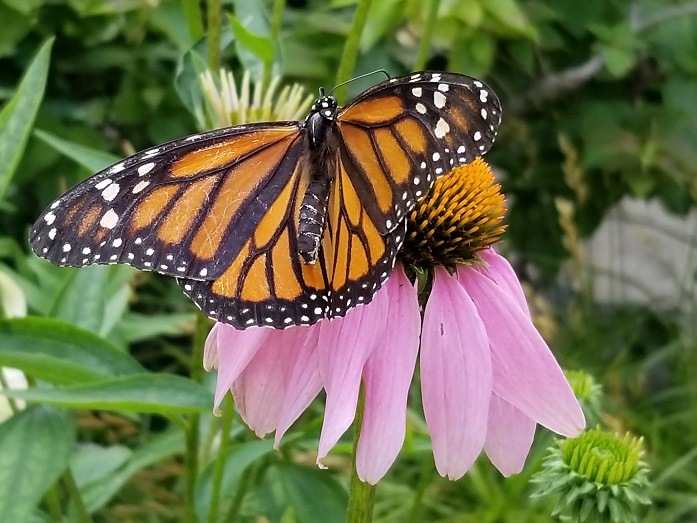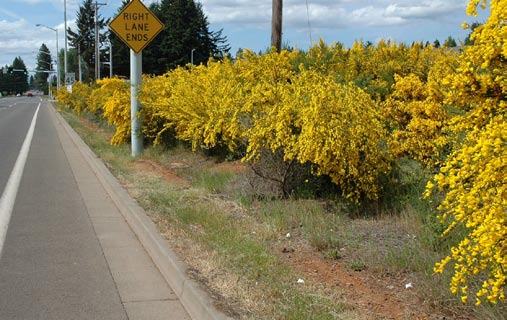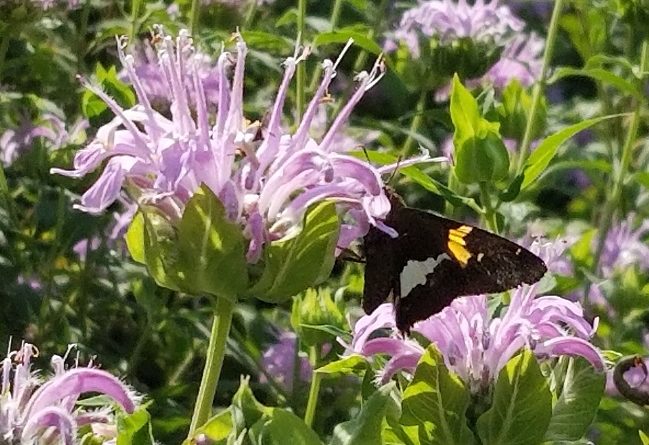Pollinator-palooza 2018
Podcast: Play in new window | Download (Duration: 1:46:24 — 48.7MB)
Subscribe: Apple Podcasts | Spotify | Android | iHeartRadio | Podchaser | Email | TuneIn | RSS | More
If you ask me, it’s a good year for butterflies.
(August 5, 2018) But what do I know? I have been known to bemoan the fact that few monarch butterflies (Danaus plexippus) seemed to visit the oasis in my Logan Square Chicago Neighborhood yard. That changed this year. To wit:

That’s just one of the many monarchs that have appeared this year. I owe a lot of it to Nick Fuller of Natural Communities Native Plants, who is an advertiser for The Mike Nowak Show. In the past couple of years, we have exchanged radio commercials for native plants, including a stand of purple coneflower (Echinacea purpurea) and some Joe Pye weed (Eutrochium purpureum).
Those two plants in particular have become a haven for pollinators of all kinds–bees, bumblebees, wasps, butterflies, flies and who knows what else. I have a tiny city lot, but when conditions are right, it is a shifting, buzzing, Grand Central Station of insect activity.
The renaissance in my own yard apparently coincides with an uptick in monarch activity, in this region at least. I just sent the featured image on this blog post to Doug Taron, PhD, Chief Curator of the Chicago Academy of Sciences. , which you probably recognize as the Peggy Notebaert Nature Museum. He’s also director of the Illinois Butterfly Monitoring Network and he appears on this show as often as we can book him (because he’s also a really, really nice guy).
I asked him to identify the butterfly in the photo I took the other day at the lakefront, and I was hoping that he’d say, “Omigod, Mike! Do you know how rare that butterfly is?! Where did you find it?!” Instead, he told me that it was a silver-spotted skipper (Epargyreus clarus), and that they are having “something of a population boom at the moment.” Oh, well.
However, he also said that information coming in from the Illinois Butterfly Monitoring Network indicates that monarchs are having a “very strong summer.” He didn’t say whether that was just for our part of the Midwest or for all of the eastern part of North America, which is another reason to have him back on the show soon. Meanwhile, this interesting story in the Chicago Tribune looks at how cities could become one of the keys to survival of the species.
Which brings us to Dolly Foster. I knew I was going to like her when I discovered that her website is called Hort4U and that when her website shows up in your browser, it identifies itself as “Hort Ergo Sum“: roughly translated, “I garden, therefore I am.” She is a landscape horticulturist–designer, propagator and plant healthcare specialist–at the Oak Lawn Park District.
She also considers herself a monarch enthusiast. She’s been a Facebook friend of mine for awhile, but I finally got the chance to meet her when she came to speak about pollinator gardens at a recent meeting of the University of Illinois Cook County Master Gardeners. Unfortunately, I was double-booked that evening and I had to duck out before I could hear most of her talk. However, told her that I would make it up to her by bringing her on the show.
And that’s exactly what we’re doing this morning. Dolly Foster will talk about pollinator gardens, organic gardening, and I think she has some interesting things to say about praying mantids, which are, of course, one of the coolest insects in any gardening. This should be fun.
Can Plant Sentry™ make shipping plants safer?
If you want to lose a few weeks of sleep, just take a look at the list of invasive plants from the USDA National Invasive Species Information Center. As they note, “This is not a list of all invasive plant species, nor does it have any regulatory implications. These profiles are provided as an educational informational tool.” Well, thank you very much. This isn’t even a comprehensive list of invasive species–just the ones that will kidnap your dog, steal your car and invade your pantry.
For instance, ever been to the Pacific Northwest? If you’re driving down the highway at a certain time of year, you will see yellow blooms EVERYWHERE. If you’re there for the first time, like I was in 1988, you’ll probably say, “What the heck is that?” If you live in the Pacific Northwest, you know that it’s something called Scotch Broom (Cytisus scoparius) and that it’s not a native plant. According to Oregon State University,

Scotch broom was introduced from Europe as a garden ornamental by early settlers of the Pacific Coast. Later it was used to prevent erosion and stabilize banks and sand dunes. The woody shrub establishes quickly in disturbed areas, according to Andy Hulting, a weed specialist for the Oregon State University Extension Service.
“Its invasive habit and economic costs have landed Scotch broom on the State Weed Board’s list of noxious weeds, along with its relatives French, Portuguese and Spanish brooms and gorse,” Hulting said. Scotch broom costs Oregonians an estimated $40 million per year in lost timber revenue and control efforts.
Unfortunately, humans have a history of moving plants around the planet, often not to the benefit of the area where those plants have been introduced. Think kudzu (Pueraria montana) in the South, or buckthorn (Rhamnus cathartica) in the Midwest, melaleuca (Melaleuca quinquenervia) in Florida, or Saltcedar (Tamarix spp.) in the West. According to Virginia Cooperative Extension (and if you want to have even more nightmares, read the story all the way through):
Data from six nongovernmental organizations indicated that 34 percent to 83 percent of the total number of invasive taxa (species, varieties, or cultivars) in the U.S. had a horticultural origin.
This has led to regulations across the United States to prevent unwanted plants from establishing themselves where they can cause environmental and economic damage. Pests and diseases that arrive on plant material (think Japanese beetles) are also a concern. However, there are 48 contiguous states and 48 different sets of regulations.
Enter Nature Hills Nursery, which calls itself “America’s Largest Online Plant Nursery.” It has developed a comprehensive plant compliance system called Plant Sentry™. This new program is designed to ensure that e-commerce vendors grow and ship only plants that are fully compliant with the regulations and restrictions of the 48 states in the continental U.S.
Plant Sentry™ Compliance System was inspired by the SANC (Systems Approach to Nursery Certification) program, which was developed under the guidance of the National Plant Board, AmericanHort, the US Department of Agriculture – APHIS, and other green industry leaders.
But this requires a comprehensive national database for plant compliance, including plant regulations and restrictions of the 48 continental U.S. states, and more:
The Plant Sentry system also includes a shipment certification program. Proprietary e-commerce software prevents the shipment of a restricted plant to each state. Each online order is automatically reviewed to remove any restricted plants based upon the customer’s zip code, thus guaranteeing that only compliant plants are shipped.
In the unlikely event that a restricted plant is shipped, a robust recovery and emergency communications plan is implemented. The state and customer are notified so that proper procedures can be followed for the return or destruction of the non-compliant plant material.
Fortunately, the program will be available to other e-commerce shippers of plant material in the Fall of 2018. Tom Buechel, President of Buechel Horticulture Solutions and Compliance Officer for Nature Hills/Plant Sentry, joins us this today to walk us through a complex but important step forward in insuring plant quality and safety across the United States.


